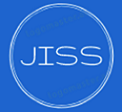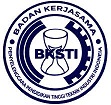Enhancing engineering student retention at Indonesian private university through improved interpersonal interactions and social integration
Abstract
Keywords
Full Text:
PDFReferences
S. Menon and M. Suresh, “Enablers of Workforce Agility in Engineering Educational Institutions,” J. Appl. Res. High. Educ., vol. 13, no. 2, pp. 504–539, 2020, doi: 10.1108/JARHE-12-2019-0304.
S. Direktorat Jenderal Pendidikan Tinggi, Riset, dan Teknologi, “Statistik Pendidikan Tinggi (Higher Education Statistics) 2021,” 2021.
Y. Talar and J. Gozaly, “Challenges for increasing the sustainability of engineering faculties : a case study in Indonesian private university,” J. Educ. Learn. Vol., vol. 19, no. 2, pp. 942–953, 2025, doi: 10.11591/edulearn.v19i2.21674.
J. M. Braxton, “Leaving College: Rethinking the Causes and Cures of Student Attrition by Vincent Tinto,” J. Coll. Stud. Dev., vol. 60, no. 1, pp. 129–134, 2019, doi: 10.1353/csd.2019.0012.
J. C. Weidman, Socialization in Higher Education and the Early Career, November. Springer, 2008.
E. T. Pascarella and P. T. Terenzini, “Predicting Freshman Persistence and Voluntary Dropout Decisions from a Theoretical Model,” J. Higher Educ., vol. 51, no. 1, pp. 60–75, 1980, doi: 10.1080/00221546.1980.11780030.
F. de Rosa and T. L. de Oliveira, “Student Retention at a Higher Educational Institution: A Comparison Between Evaded and Nonevaded Groups Using Partial Least Square,” J. Coll. Student Retent. Res. Theory Pract., vol. 24, no. 2, pp. 499–525, 2022, doi: 10.1177/1521025120924663.
V. R. Waldron and S. C. Yungbluth, “Assessing student outcomes in communication-intensive learning communities: A two-year longitudinal study of academic performance and retention,” South. Commun. J., vol. 72, no. 3, pp. 285–302, 2007, doi: 10.1080/10417940701484233.
M. E. Pritchard and G. S. Wilson, “Using Emotional and Social Factors to Predict Student Success,” J. Coll. Stud. Dev., vol. 44, no. 1, pp. 18–28, 2003, doi: 10.1353/csd.2003.0008.
T. T. Ishitani, “Time-Varying Effects of Academic and Social Integration on Student Persistence for First and Second Years in College: National Data Approach,” J. Coll. Student Retent. Res. Theory Pract., vol. 18, no. 3, pp. 263–286, 2016, doi: 10.1177/1521025115622781.
N. Abdul-Rahaman, E. Terentev, and V. E. Arkorful, “The Tertiary Experience: Of Social Integration, Retention and Persistence – A Review,” Public Organ. Rev., vol. 23, no. 1, pp. 133–147, 2023, doi: 10.1007/s11115-022-00603-2.
W. H. Wong and E. Chapman, “Student satisfaction and interaction in higher education,” High. Educ., vol. 85, no. 5, pp. 957–978, 2023, doi: 10.1007/s10734-022-00874-0.
J. M. Vaterlaus, T. Shaffer, and L. Pulsipher, “College student interpersonal and institutional relationships during the COVID-19 pandemic: A qualitative exploratory study,” Soc. Sci. J., pp. 1–14, 2021, doi: 10.1080/03623319.2021.1949553.
S. Cinkir, S. Yildiz, and G. Kurum, “The Effect of Undergraduate Students’ Perceived Service Quality on Student Commitment,” SAGE Open, vol. 12, no. 2, pp. 1–15, 2022, doi: 10.1177/21582440221096134.
J. F. Hair, W. C. Black, B. J. Babin, and R. E. Anderson, Multivariate Data Analysis, 7 th. Pearson New International Edition, 2014.
N. S. Thomas, P. B. Barr, D. L. Hottell, A. E. Adkins, and D. M. Dick, “Longitudinal influence of behavioral health, emotional health, and student involvement on college student retention,” J. Coll. Stud. Dev., vol. 62, no. 1, pp. 2–18, 2021, doi: 10.1353/csd.2021.0001.
M. S. Janis Henderson, “Student Organization Participation Benefits Inventory: Anticipated and Experienced,” Texas Tech University, 2017.
V. Sher, M. Hatala, and D. Gaševic, “Analyzing the consistency in within-activity learning patterns in blended learning,” in roceedings of the tenth international conference on learning analytics & knowledge, 2020, no. March, pp. 1–10, doi: 10.1145/3375462.3375470.
D. P. Wicaksono, “Analisis Eta Untuk Mengukur Derajat Hubungan,” dimaschannel.com, 2022. .
H. Shin, “Friendship Dynamics of Adolescent Aggression, Prosocial Behavior, and Social Status: The Moderating Role of Gender,” J. Youth Adolesc., vol. 46, pp. 2305–2320, 2017, doi: 10.1007/s10964-017-0702-8.
A. J. Bahns, J. Lee, and C. S. Crandall, “Culture and Mobility Determine the Importance of Similarity in Friendship,” J. Cross. Cult. Psychol., vol. 50, no. 6, pp. 731–750, 2019, doi: 10.1177/0022022119852424.
Y. Li, S. Li, C. Wei, and J. Liu, “How students’ friendship network affects their GPA ranking: A data-driven approach linking friendship with daily behaviour,” Inf. Technol. People, vol. 33, no. 2, pp. 535–553, 2020, doi: 10.1108/ITP-03-2018-0148.
Y. Cao et al., “Orderliness predicts academic performance: Behavioural analysis on campus lifestyle,” J. R. Soc. Interface, vol. 15, no. 146, p. 20180210, 2018, doi: 10.1098/rsif.2018.0210.
M. Gremmen, C. Berger, A. Ryan, C. Steglich, R. Veenstra, and J. K. Dijkstra, “Adolescents’ Friendships, Academic Achievement, and Risk Behaviors: Same-Behavior and Cross-Behavior Selection and Influence Processes,” Child Dev., vol. 90, no. 2, pp. e192–e211, 2019, doi: 10.1111/cdev.13045.
A. E. King, F. A. E. McQuarrie, and S. M. Brigham, “Exploring the Relationship Between Student Success and Participation in Extracurricular Activities,” Sch. A J. Leis. Stud. Recreat. Educ., vol. 36, no. 1–2, pp. 42–58, 2021, doi: 10.1080/1937156X.2020.1760751.
J. M. Millunchick and Y. Zhou, “What affects student outcomes more: GPA or participation in co-curricular activities?,” 2020 ASEE Virtual Annu. Conf. Content Access, vol. June, 2020, doi: 10.18260/1-2--35496.
J. A. Kristen, C. Lenis, Y. V Romero, K. J. Maser, and E.-S. Morote, “Does participation in extracurricular activities impact student achievement?,” J. Leadersh. Instr., vol. 15, no. 1, pp. 21–26, 2016.
S. L. Shafer, “A Case study : the perception of higher education administrators at historically black colleges and universities on the importance of academic student organizations as a retention technique,” Thesis, Diss. Capstones, pp. 1–110, 2016.
J. Zhang, S. Zhao, H. Deng, C. Yuan, and Z. Yang, “Influence of interpersonal relationship on subjective well-being of college students: The mediating role of psychological capital,” PLoS One, vol. 19, no. 9, pp. 1–13, 2024, doi: 10.1371/journal.pone.0293198.
Z. Yang, Z. Su, S. Liu, Z. Liu, W. Ke, and L. Zhao, “Evolution features and behavior characters of friendship networks on campus life,” Expert Syst. Appl., vol. 158, pp. 1–13, 2020, doi: 10.1016/j.eswa.2020.113519.
M. W. Savage, R. E. Strom, A. S. Ebesu Hubbard, and K. S. Aune, “Commitment in College Student Persistence,” J. Coll. Student Retent. Res. Theory Pract., vol. 21, no. 2, pp. 242–264, 2019, doi: 10.1177/1521025117699621.
R. García-Ros, F. Pérez-González, F. Cavas-Martínez, and J. M. Tomás, “Social interaction learning strategies, motivation, first-year students’ experiences and permanence in university studies,” Educ. Psychol., vol. 38, no. 4, pp. 451–469, 2018, doi: 10.1080/01443410.2017.1394448.
C. E. Rusbult, “Commitment and satisfaction in romantic associations: A test of the investment model,” J. Exp. Soc. Psychol., vol. 16, no. 2, pp. 172–186, 1980, doi: 10.1016/0022-1031(80)90007-4.
C. E. Rusbult, “A longitudinal test of the investment model: The development (and deterioration) of satisfaction and commitment in heterosexual involvements,” J. Pers. Soc. Psychol., vol. 45, no. 1, pp. 101–117, 1983, doi: 10.1037/0022-3514.45.1.101.
DOI: http://dx.doi.org/10.62870/jiss.v11i1.29673
Refbacks
- There are currently no refbacks.
 is supported by
is supported by








